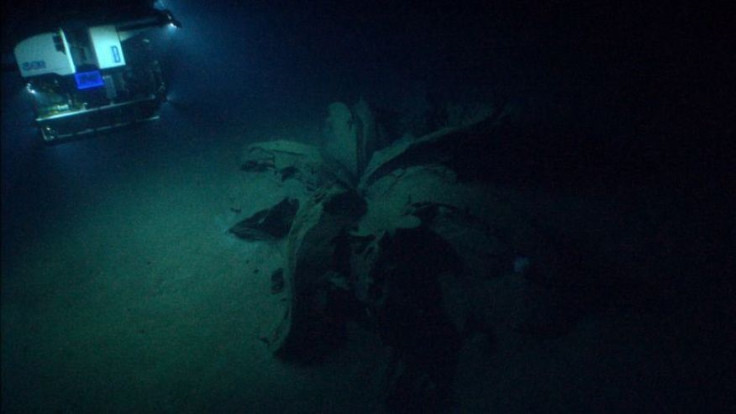Gulf of Mexico: Shipwreck Explorers Discover Rare Submerged 'Tar Lily' Volcanoes

Researchers exploring sunken ships in the Gulf of Mexico have discovered rare tar volcanoes, otherwise known as asphalt volcanoes.
The unusual phenomenon was found off the coast of Galveston by a team of archaeologists and marine biologists at Texas A&M University, who originally believed the blackened structures were shipwrecks.
As underwater cameras descended, the team, along with scientists from the National Oceanic and Atmospheric Administration, found that the object was actually a solidified eruption from an underwater volcano. The eruption from the seabed vents spouted asphalt instead of lava, pushing out the material in the shape of blooming lilies.
Dubbed "tar lilies" by researchers, Fox News stated that each structure measure around 10ft high and 20ft across. They were discovered approximately 175 miles off the coast of Texas, submerged under one mile of water.
"It looked like a shipwreck," said Thomas Heathman, a marine biology student working on the project.
"And then once we get down there, we see this structure that we've never seen before. Never seen anything like it in the northern Gulf of Mexico."
One researcher told the Houston Chronicle that the flower shape had formed "like Pay-Doh being pushed through a mould".
He said: "As [the hot asphalt] came out it hit cold water, probably quite rapidly, and fractured in a way that made it splay onto the sea floor like a flower."
Tar volcanoes were first discovered in 2003 during an expedition of the research vessel SONNE in the Gulf of Mexico. They are entirely made from asphalt and formed when crude oil seeps up from the Earth's crust. Although the tar is fairly hot when it emerges from the reservoirs below the sea, it hardens when it meets the cold seawater.
Petroleum and methane hydrate are also spewed from the volcano, attracting chemical-loving bacteria and tubeworms. Clinging to the newest discovery was a selection of marine life, including coral and anemones.
"Imagine that this would be like a big piece of molten tar," William Kiene, a regional scientist with NOAA's Office of National Marine Sanctuaries, told KHOU. "And as it gets to the surface and it comes in contact with the cold water, it would solidify. So it came up in this very peculiar shape, like a lily."
The team was originally searching the seabed for ancient shipwrecks. With the knowledge of three sunken vessels off the Galveston coast, researchers had already recovered artifacts including anchors and jars of ginger, possibly used to treat seasickness.
Gilbert Rowe, a professor in marine biology at the Texas A&M, told the Latin Post that we know less about the deep oceans than the moon.
He said: "The more we look, the more weird features we find, and each of these features is a separate habitat for the creatures that live there."
© Copyright IBTimes 2024. All rights reserved.






